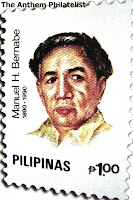The National Anthem of Guatemala
 Written in response to a contest calling for a national anthem to be adopted, the first ever playing of the winning entry took place during a lyric-literary meeting taking place at the Colon Theater, the night of Sunday 14 March 1897, as one of the main events of the Central American Exposition, and the author of the music -Maestro Rafael Alvarez- was decorated with a gold medal and honor diploma. The author of the lyrics, however, was submitted anonymously, it was not until 1911, when it was discovered that the author was the Cuban poet Jose Joaquin Palma, who on his deathbed was honored with a silver wreath placed on his head, while outside the public and the bands sang the Himno Nacional.
Written in response to a contest calling for a national anthem to be adopted, the first ever playing of the winning entry took place during a lyric-literary meeting taking place at the Colon Theater, the night of Sunday 14 March 1897, as one of the main events of the Central American Exposition, and the author of the music -Maestro Rafael Alvarez- was decorated with a gold medal and honor diploma. The author of the lyrics, however, was submitted anonymously, it was not until 1911, when it was discovered that the author was the Cuban poet Jose Joaquin Palma, who on his deathbed was honored with a silver wreath placed on his head, while outside the public and the bands sang the Himno Nacional.The lyrics were modified slightly in 1934 by Professor Jose Maria Bonilla Ruano, a Spanish grammar scholar. Some verses were softened in their bloody context while others were enhanced in their poetic beauty.
The anthem has four verses (including four separate choruses at the end of each verse). Unlike many other nations with multi-verse anthems, all four verses are official and sung in Guatemala.
Rafael Alvarez Ovalle (San Juan Comalapa, Chimaltenango, Guatemala, 24.10.1858, Guatemala City, 31.12.1946) is a flutist, composer and educator Guatemala.
Rafael Alvarez Ovalle was the first musical lessons from his father, Benjamin Alvarez, who since 1871 headed the school of music of Santa Lucia Cotzumalguapa, on the coast of the Pacific in Guatemala. Young Rafael assumed that position after his father died in 1875. Four years later, at age 21, he left Santa Lucia to go to Guatemala City. He auditioned with the Director of the Marching Band of Guatemala, the German master Emilio Dressner, and managed to join the group as flutist. At the same time, took classes in composition with the teacher Dressner, thus boosting his artistic development. However, he did not complete his training as Dressner had to return to Germany in 1885. That same year, Rafael Alvarez participated in a competition organized by the head of state, General M. Aguilar, to put music to a national anthem. The composition by Alvarez was declared the winner, albeit with some controversy. For nine years this popular hymn was sung in schools, until President José María Reyna Barrios contest reconvened on another letter. Alvarez resubmitted its composition, with the fortunes of which was particularly suited to underground the new poem. The composition won again, and since that time known as the National Anthem of Guatemala.
Rafael Alvarez Ovalle was the first musical lessons from his father, Benjamin Alvarez, who since 1871 headed the school of music of Santa Lucia Cotzumalguapa, on the coast of the Pacific in Guatemala. Young Rafael assumed that position after his father died in 1875. Four years later, at age 21, he left Santa Lucia to go to Guatemala City. He auditioned with the Director of the Marching Band of Guatemala, the German master Emilio Dressner, and managed to join the group as flutist. At the same time, took classes in composition with the teacher Dressner, thus boosting his artistic development. However, he did not complete his training as Dressner had to return to Germany in 1885. That same year, Rafael Alvarez participated in a competition organized by the head of state, General M. Aguilar, to put music to a national anthem. The composition by Alvarez was declared the winner, albeit with some controversy. For nine years this popular hymn was sung in schools, until President José María Reyna Barrios contest reconvened on another letter. Alvarez resubmitted its composition, with the fortunes of which was particularly suited to underground the new poem. The composition won again, and since that time known as the National Anthem of Guatemala.
The author of the letter remained anonymous until the poet Cuban José Joaquín Palma revealed on his deathbed that the letter was his, and had not declared to be the author for having been one of the jurors. This composition led Alvarez to national fame with numerous honors, culminating in a grand ceremony in his honor was held in 1911 at the Teatro Colon. As a flutist and guitarist, Alvarez joined various groups, notably the estudiantina "The Tuna", but also some estudiantinas for young ladies who were part of his activity as a teacher of musical training. His output as a composer is limited to sacred music in Latin, pieces of dance and ballroom, and various arrangements for guitar or estudiantina.
The stamp above of the anthem composer and lyricist was issued in 1951. The overprint of the same stamps were issued in 1958.






